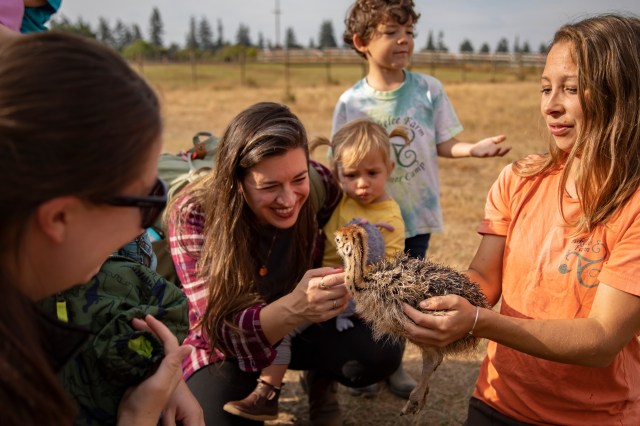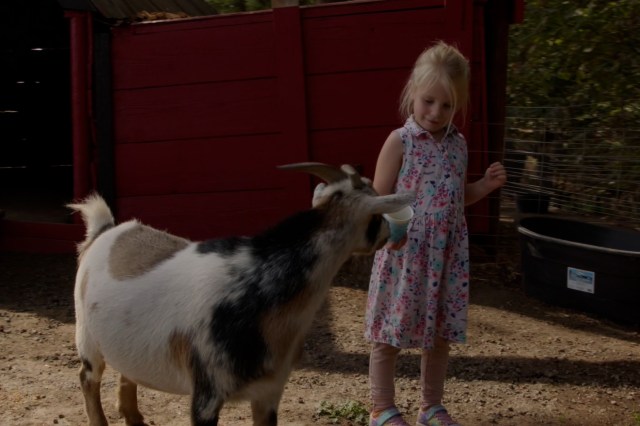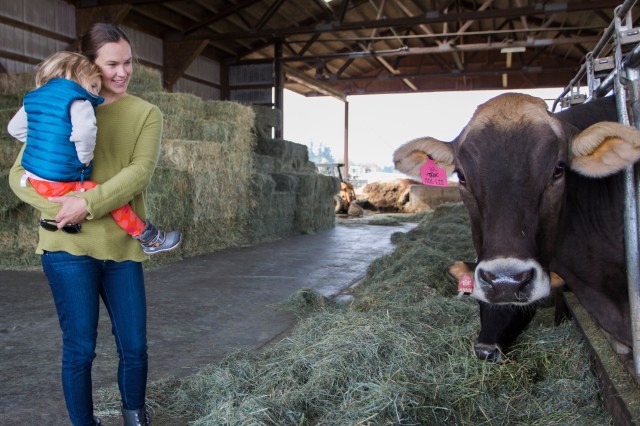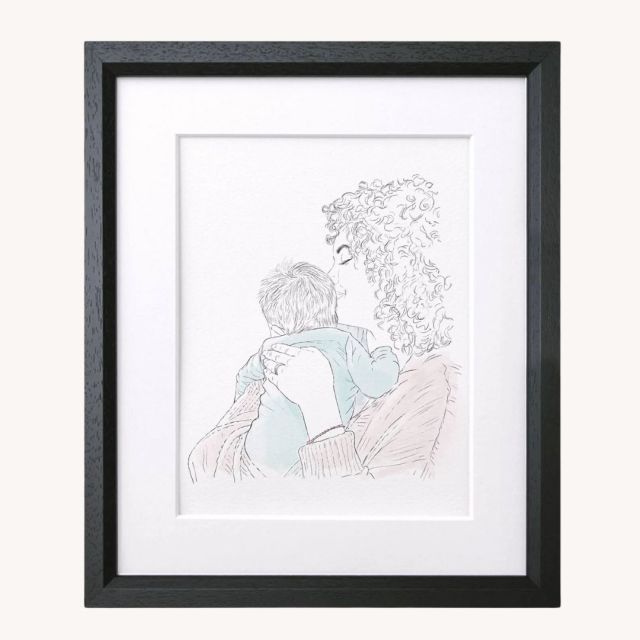We parents talk a lot about building trust. We tell our kids we want to trust them not to sneak on a screen in the middle of the night. We want to trust them to tell us the truth when we ask them a hard question. We want to trust them to make good decisions.
But what about the other way around? We want them to trust us, too, right?
“Our kids being able to trust us is the most protective factor for their well-being,” said longtime parent coach Abigail Wald, whose popular parenting advice can be found at the Mother Flipping Awesome Private Podcast. Wald, who specializes in working with parents of strong-willed kids, explained that trust is a secret ingredient to a better all-around relationship with our kids.”When you break the trust, you put in the same amount of work but don’t get the rewards.”
So how do we do it? How do we make sure we’re building trust to keep our kids talking to us, even as they enter the roller coaster of adolescence? And, more importantly, what are we doing wrong? We spoke with experts about things parents say or do that can ruin their kids’ trust—and how they can build trust moving forward.
Things to Avoid When Building Trust with Kids
Don’t put down your kids’ friends.
Best for: All kids
Not liking your kids’ friends—or at least, making it obvious you don’t—is an easy way to dampen your kids’ trust. Wald explained it like this: If they like their friend but you don’t, you’re positioning them between you and their friends; it’s almost like a divorce. “It creates this feeling of, ‘Either I have to distrust myself, like I have bad taste in friends, or I can’t trust you.’”
In the end, you may not always like all the people your kids choose as buddies (Just wait ‘til they’re dating!), but try to keep those feelings to yourself and trust that your child will make the right decisions about the company they keep.
Don’t talk about your kids to make other parents laugh.
Best for: Little and big kids
If you’re anything like every parent everywhere—you’ve probably told stories about your kids to get a laugh. We get it: Kids are funny. They do funny things. And sharing those things in conversation helps connect us with other parents. But using your kids as a punchline—especially when kids can hear what we’re saying—can make kids super uncomfortable. If you’re talking about your kids’ experiences in a way that makes them seem “funny” to others, your child may feel like they can’t trust you to share those experiences.
The same goes for discussing your kids’ behavior issues in front of other adults. For example, if your child acts out in public and you “decide to ally yourself with the other adult in the room as opposed to with your child,” (saying something like, “Sorry she’s being so difficult,” to a sales clerk instead of tending to your “difficult” child), that might decrease the trust your child has in you to support her 100 percent, Wald said.
Don’t post pictures of them without permission.
Best for: Big kids, tweens and teens
While opinions on this vary wildly, studies show at least 77 percent of parents share photos of their kids on social media. And most kids become acutely aware of your “sharenting”—and may have feelings about it—as early as seven.
“If a child ever expresses a lack of ease around that, then that’s something to take seriously. We are teaching our kids consent in that conversation,” says Wald.
So be on the same page. The next time you take a picture you might want to share—talk about it with your child. You might decide together to share the photo with particular people (Grandma and Grandpa, via text message, perhaps, or restrict who can see it online).
With enough reassurance, you can build a stronger relationship, and your child may not become one of those Gen Z kids covering their noses in family photos.
Pssst: For those who want to share photos with friends and family without making it a public display, there are safer options like the Tinybeans app (you can learn more and download it here!), which puts parents in total control of who can see and interact with photos and videos.
Don’t check your child’s phone/social media without telling them.
Best for: Tweens and teens
This isn’t to say you shouldn’t monitor your kids’ social media and phone use—you definitely should! But if you want to build trust with your kids, they need to be aware of this possibility from the beginning.
When you give your child a phone or social media access, explain that part of the deal is that you can check on these things when you feel you need to. “This way, the child doesn’t feel betrayed if the parent needs to talk to them about something they find,” Wald said.
If you’ve already given your kids free access to devices, it’s not too late! Do a reset: Set up a time to have your child sign a social media contract—Common Sense Media has a good one you can print for free—which can lay out all your ground rules.
Don’t get caught up in power struggles.
Best for: All Kids
If you find yourself saying, “Because I said so” to get your kids to comply, you’re probably on the wrong track. At least, that’s according to Jen Lumanlan, a psychologist and author of Parenting Beyond Power: How to Use Connection and Collaboration to Transform Your Family—and the World.
“You as a parent are saying, ‘I don’t care what your need is, you are going to do what I say because I say so—that feels as crappy to a 3-year-old or a 10-year-old as it does to an 18-year-old,” she explains.
According to Lumanlan, the solution is for parents to consider their children’s needs as equal to their own—not more; not less. For example: Instead of demanding your child clean up their messy room ASAP, consider why you need the room cleaned—and why your child is OK without it being clean (maybe you require order, and your child needs comfort). Decide what you can live with, and propose a middle ground (in this case, maybe your child can agree to pick up small items on the floor that might hurt someone if stepped on, or designate a single day of the week when they’d agree to tidy up.). “It builds trust when our children see us trying to come toward them and meet their needs,” she says.
Don’t criticize what they’re wearing.
Best for: All kids
Your child is trying to step out into the world as a unique person—especially when they get old enough to choose their clothes and walk onto the runway that is middle and high school. So let them express themselves!
If you tell them you don’t like what they’re wearing, you’re making it a “me against you” playing field. This doesn’t mean that you should let them go to school in a bikini, of course. But if it’s a simple matter of goth clothes, baggy jeans, or mismatched patterns, let them do them. “Parents need to say, ‘Why is this a big deal to me?’” says Lumanlan.
DON’T ignore them when they’re upset—even if they’re faking it.
Best for: Toddlers, little kids, big kids
If your child is crying, you should always go to them to offer care—even if it’s just a simple, “Are you OK?” (older kids may not want to talk, but they’ll be glad you asked.)
The same goes for fake crying (because you know the difference). After all, even faking it still shows a need for connection. Whatever you do, don’t tell them, “You’re OK.” Let them be the ones to determine that. “You’re ‘OK’ is your judgment when they’re clearly saying, ‘I need some support right now,'” Lumanlan says.
And, finally: If they’ve just opened up to you, don’t offer advice before asking if they want it.
Best for: Big kids, tweens, teens
The time will come when your child will come to you and want to talk. We know what you’ll be thinking: I’m doing it! My child trusts me! YES!
Now’s when you have to remember: Don’t. Offer. Advice. At least, not yet.
Instead, listen and empathize. At some point, you can ask, “Would you like my advice?” If your child says yes, go for it! If not: Keep your mouth shut. They may come to you later for that nugget of wisdom; they may not. Either way, you’ve done your job—and your child trusted you enough to open up. So go you!
Things You Can Do to Build Trust with Kids
Make a “Mommy No Mad” zone.
Best for: Little kids (and, in a modified way, big kids too)
Here’s an amazing hack that’ll help kids open up. Set up what Wald calls a “Mommy No Mad” zone. Here’s how it works: When your child has something to share, tell them they’re in the “Mommy No Mad Zone”—you can even make a big bubble motion with your hands to help them visualize it.
“It is simply information that goes in, and when we end the Mommy No Mad zone I’ve completely forgotten about it. It created this magical opening and ability for my kids to tell me things when they were young,” says Wald.
If you’ve got older kids you want to try this with, consider using the 5-Minute Rule. They can tell you anything, and while there isn’t a guarantee of zero consequences, there is a promise of zero judgment.
DO show your kids you believe they can handle a situation on their own.
Best for: Big kids, tweens and teens
You might mean well, but when you threaten to intervene by telling your child, “I’m going to e-mail your teacher,” or “I’m going to call your friend’s mom,” that tells the child you don’t believe they can handle the situation themselves. “They may not want to tell you anything anymore because they don’t know what boundaries you’re going to step over,” explains Wald.
Instead, try asking first. If your child mentions having trouble in school, say, “Would you like me to talk to your teacher about what we can do to help you understand?” Let your child’s feelings guide your actions. If they say, “No way!” you can ask them to come up with other ways (in this case, getting help from a friend or tutor) to handle the situation.
DO opt for communication over consequences.
Best for: All kids
Have you just told your kids that they “won’t get in trouble” if they tell you the truth about something—and now that you know what it was, you want to take away their cell phone for a month or give your little offenders two weeks without playdates?
Not so fast!
“How deeply is it engrained in us that somebody who does something they shouldn’t do should be punished in some way?” says Lumanlan, who also runs the website and Podcast Your Parenting Mojo. “By punishing a child, we are eroding trust between us and them.”
She said parents should be more concerned about why the child has misbehaved than how to punish them. “When we use consequences or punishments, we are not truly listening to understand our child and to find out why are they doing this thing that we don’t want them to do,” she says.
Of course, this doesn’t mean that you should ignore their infractions. On the contrary: Open the conversation. Dig in. Try to find out what’s driving the behavior. For instance: Is your older child hitting his younger sib because you’ve been paying her more attention? Address that instead of the Time Out Chair.
In the end: The value of open communication—especially as kids get older—will be more helpful than the value of punishment. (And, by the way, research suggests that punishments don’t usually work anyway.)
Related story: How to Get Kids to Express Their Feelings at Every Age






































































